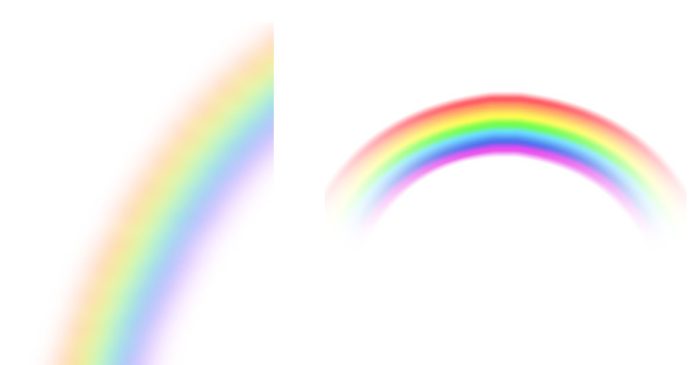How Many Colors Are In A Rainbow?
Rainbows have captivated humans for centuries with their brilliant spectrum of colors. Whether after a rainstorm or as part of a sunny day’s optical magic, the sight of a rainbow brings awe and wonder. But how many colors are there in a rainbow, really?
The answer, as it turns out, is 7 — and while this is the classic answer, there’s more to the story. Let’s explore the colors of the rainbow and the science behind why it appears the way it does!
The 7 Classic Colors of the Rainbow
The traditional rainbow is divided into seven distinct colors, and this division comes from the famous work of Sir Isaac Newton. When Newton experimented with light and prisms, he observed that white light could be split into a spectrum of colors. He chose to divide the colors into seven groups, influenced by both scientific observation and the number seven’s significance in culture and nature.
Here are the 7 classic colors of the rainbow:
- Red – The first color we see in the rainbow’s arc. Red has the longest wavelength of visible light.
- Orange – A warm and vibrant color formed by the combination of red and yellow.
- Yellow – A bright and cheerful color that is next to orange in the spectrum.
- Green – A color formed between yellow and blue, commonly associated with nature.
- Blue – A calming and cool color, next to green, with a shorter wavelength.
- Indigo – A deep blue color that lies between blue and violet. Some modern rainbows omit indigo due to its close resemblance to blue and violet.
- Violet – The final color of the visible spectrum, with the shortest wavelength of all the colors in the rainbow.
Why Are There 7 Colors in a Rainbow?
The reason we see a rainbow with these specific colors is due to the refraction and dispersion of light. When sunlight passes through water droplets in the atmosphere, the light bends (refracts) and spreads out (disperses) into different colors. Each color has a different wavelength, and they bend by different amounts, creating the familiar spectrum.
Newton’s choice of seven colors wasn’t just based on the science of light, but also on his personal belief that the number seven held special significance. In his time, seven was considered a sacred and meaningful number in many contexts—like the seven days of the week and the seven notes in a musical scale.
The Science Behind the Spectrum
While most people are familiar with the 7 colors of the rainbow, the spectrum of visible light actually contains many more colors that blend seamlessly together. These colors form a continuous spectrum, meaning that there are countless shades in between the classic seven.
For example, the transition from red to orange, or from yellow to green, isn’t just a single color shift. In reality, there are many intermediate hues that the human eye perceives as smooth transitions, but which don’t have specific names like the classic seven.
What About “Indigo”?
In modern depictions of rainbows, the color indigo is often left out or merged with blue or violet. This is because indigo’s wavelength is very close to that of blue and violet, making it harder to distinguish as a separate color by the human eye. As a result, many rainbow images today show just six colors: red, orange, yellow, green, blue, and violet.
Some argue that indigo is an outdated or unnecessary addition, and that blue and violet already cover the spectrum adequately. However, Newton’s original seven colors remain a tradition, even though in practice the distinction between indigo and blue might not be very noticeable.
Can We See More Than Seven Colors?
While rainbows typically show seven colors to the human eye, advanced technology and scientific instruments can detect wavelengths of light outside the visible spectrum—like ultraviolet and infrared. However, these colors are invisible to the naked eye and don’t appear in the traditional rainbow.
Some people, due to color vision deficiencies or unique variations in perception, may see different shades or fewer colors in a rainbow. For example, individuals with color blindness might struggle to distinguish between certain hues, like red and green.
Fun Facts About Rainbows:
- Rainbows Can Have Multiple Arcs: Sometimes you’ll see double rainbows, where the second arc appears outside the first, with the colors reversed.
- Circular Rainbows: If you view a rainbow from a high vantage point or from an airplane, you may see it as a full circle, not just a half-arch.
- Rainbows Aren’t Always Colorful: A white rainbow, also called a fogbow, can appear when the water droplets are very small, and it lacks the vivid colors of a traditional rainbow.
Conclusion
So, how many colors are in a rainbow? The classic answer is seven: red, orange, yellow, green, blue, indigo, and violet. However, the reality is that the visible spectrum of light contains countless shades that blend into each other, creating a continuous and beautiful array of colors. And while Newton’s original division of the rainbow into seven colors is steeped in tradition, the rainbow itself is a magnificent and fluid display of light, inviting each observer to marvel at nature’s color palette.
Whether you see seven colors or just a beautiful arc of light, the rainbow reminds us of the wonders of nature and the science that makes it all possible.


